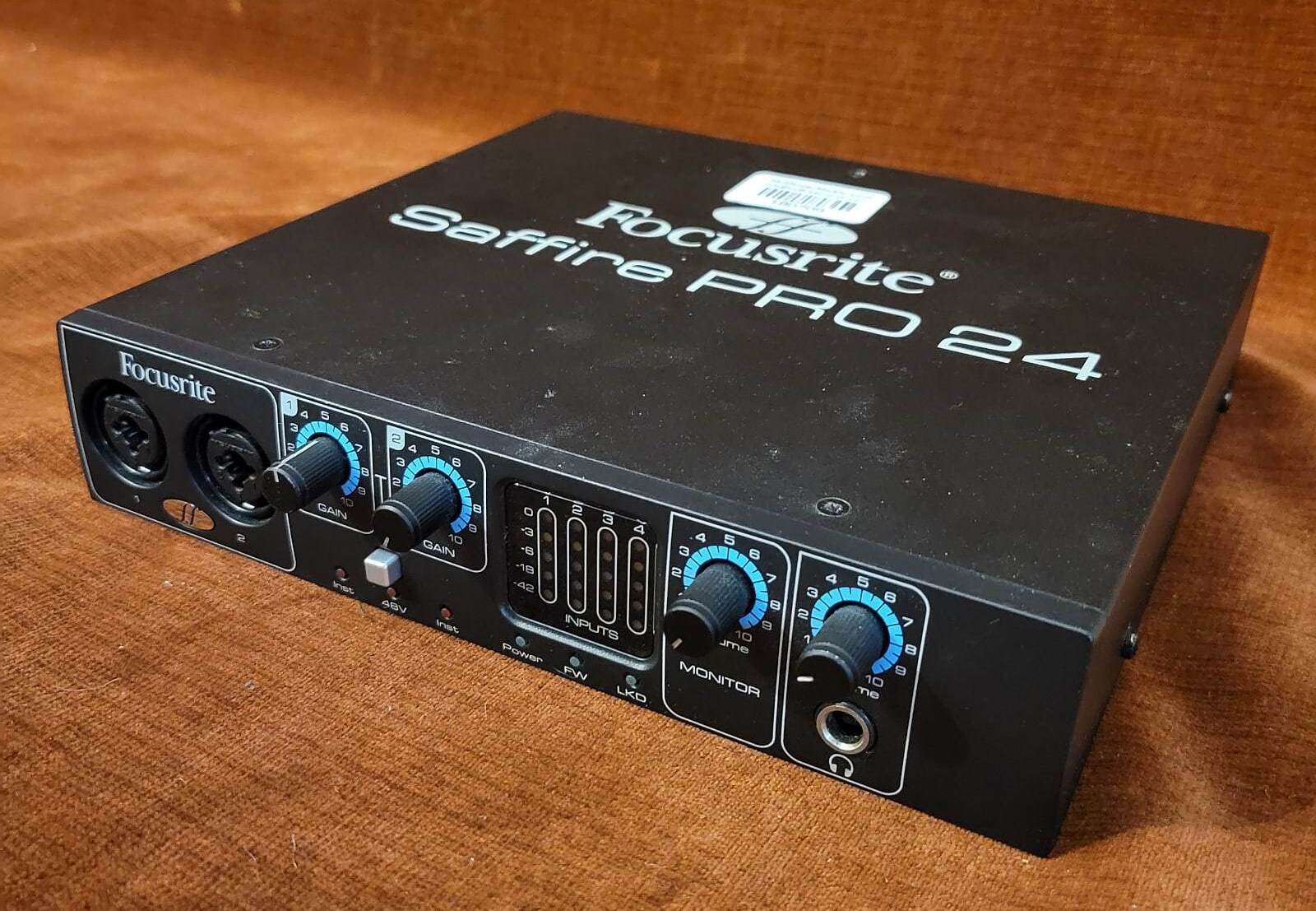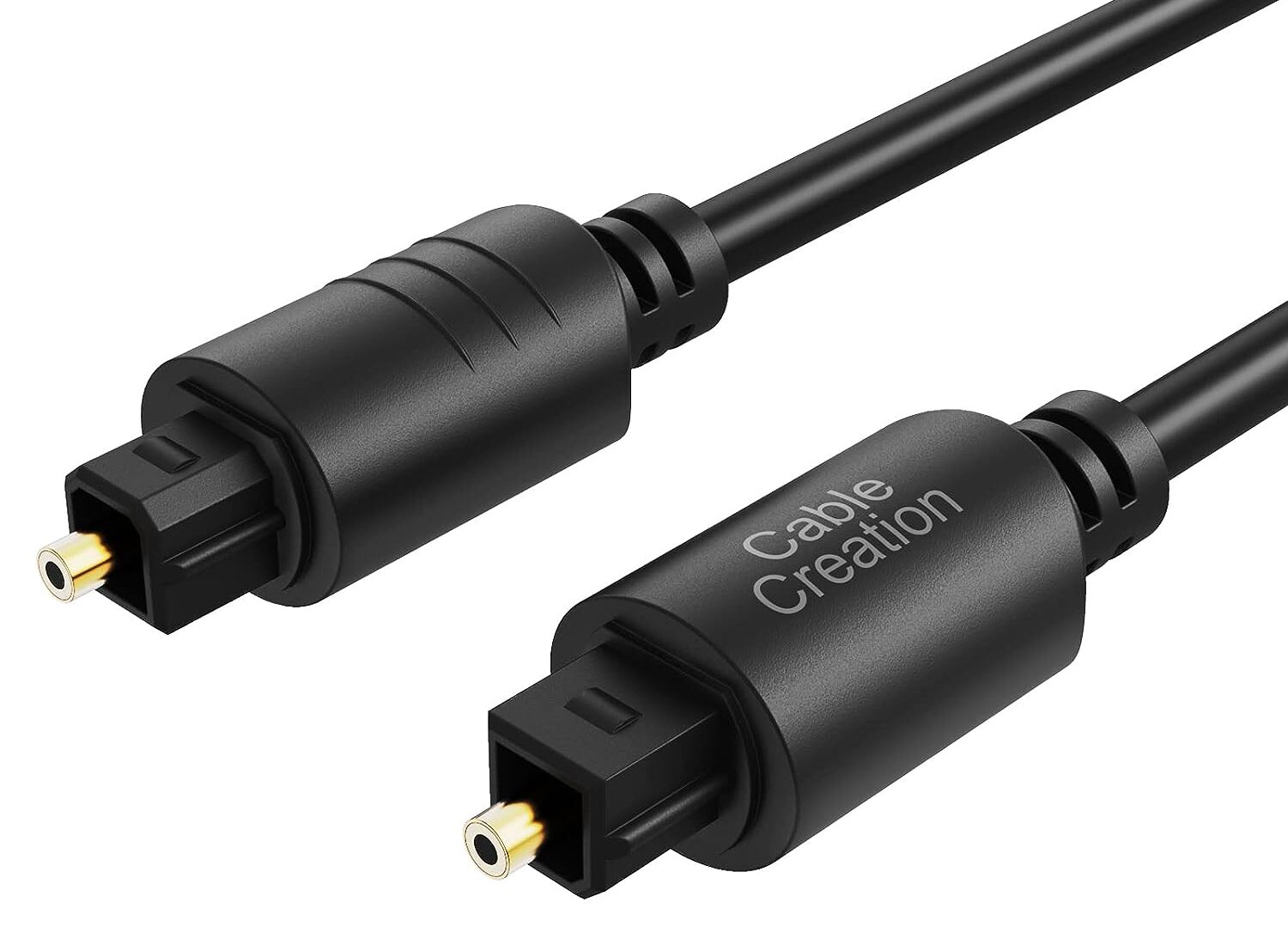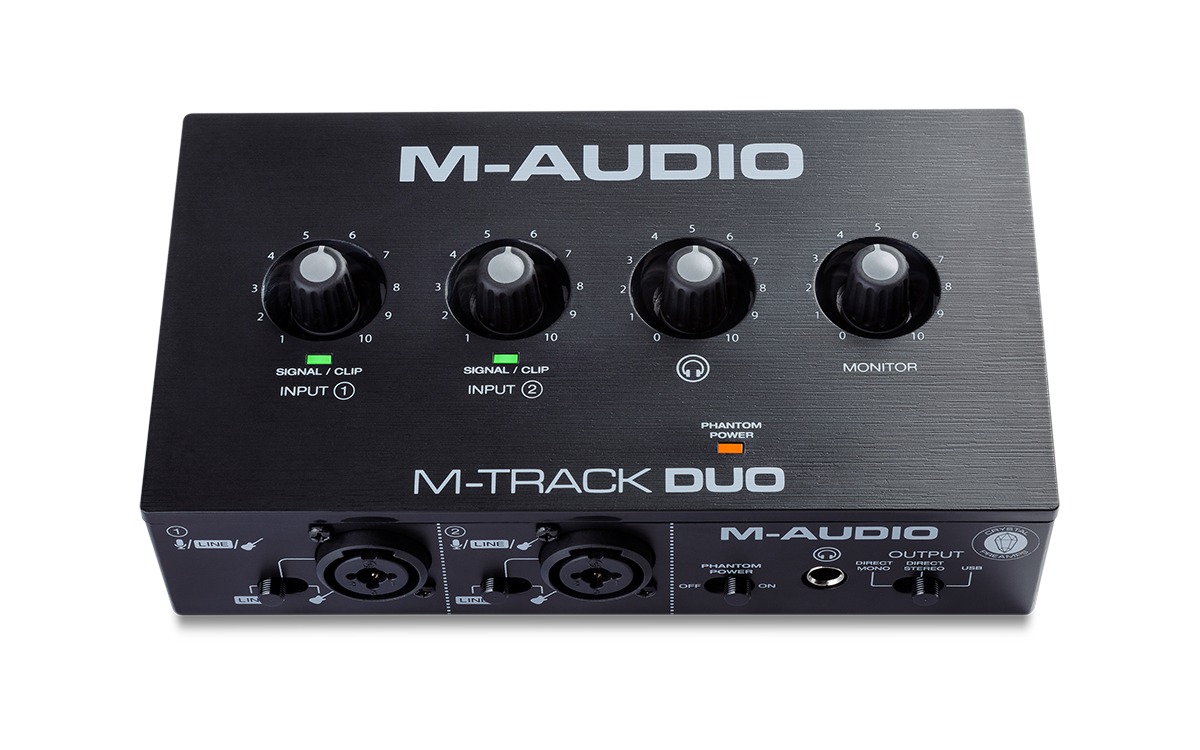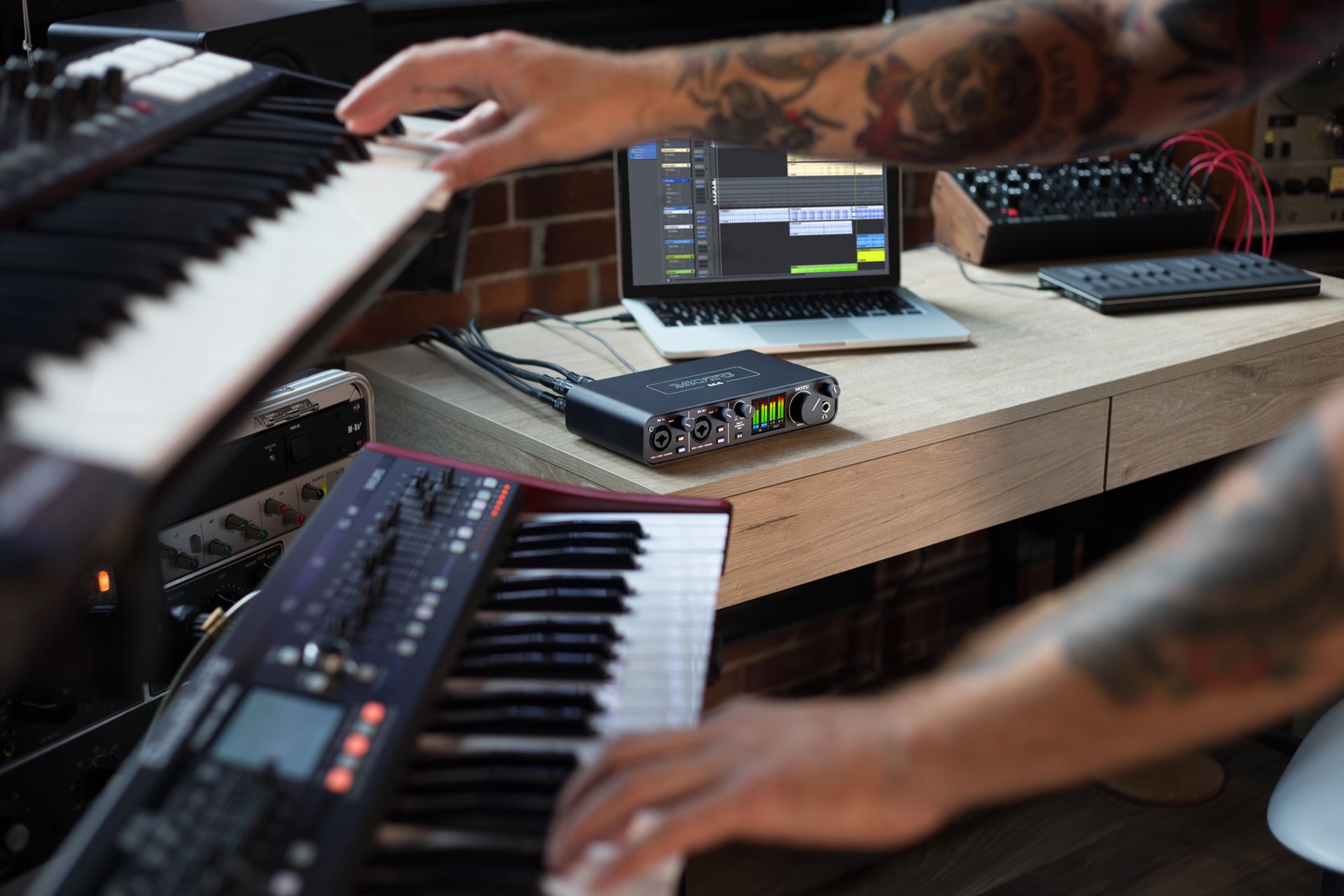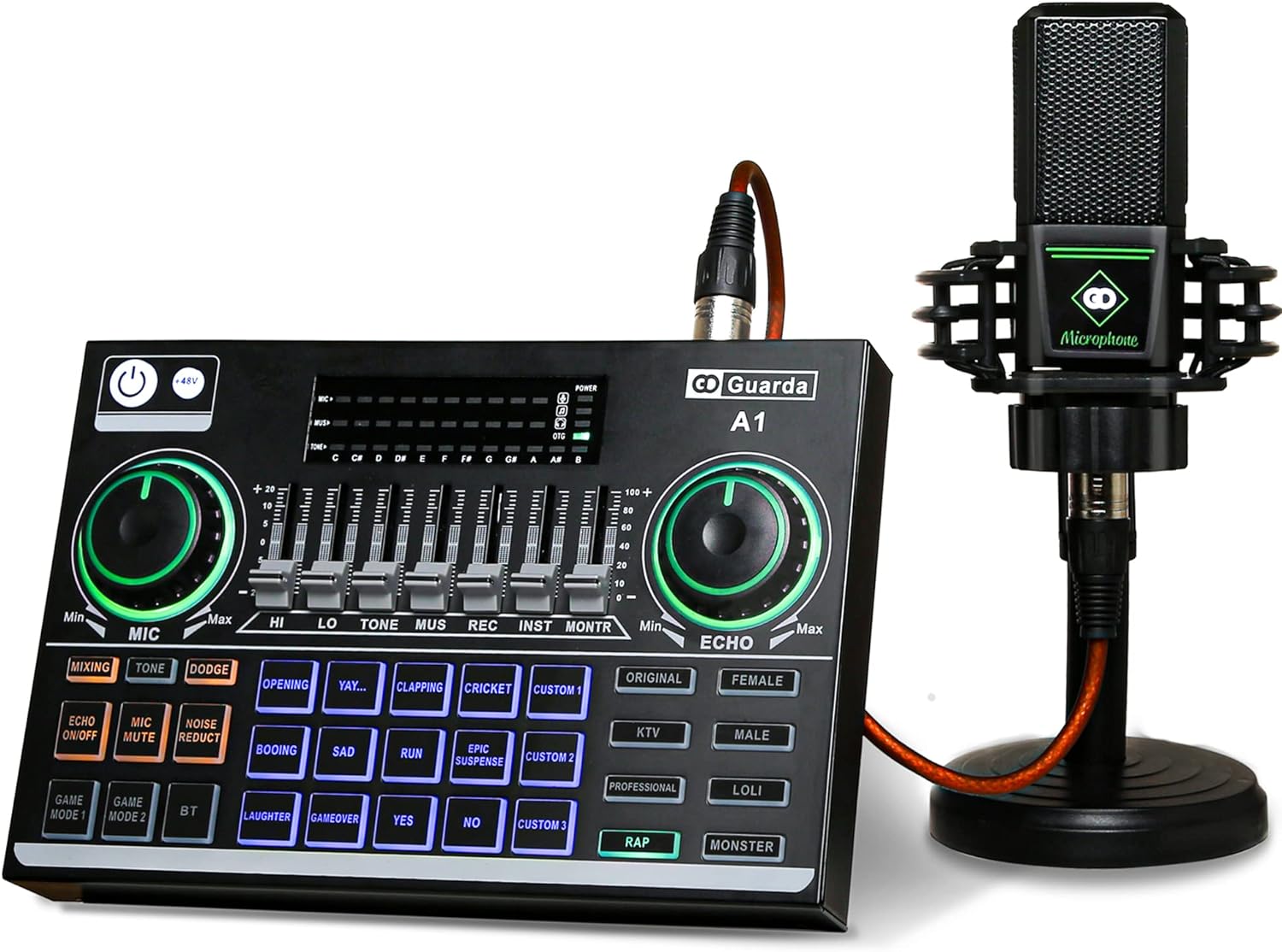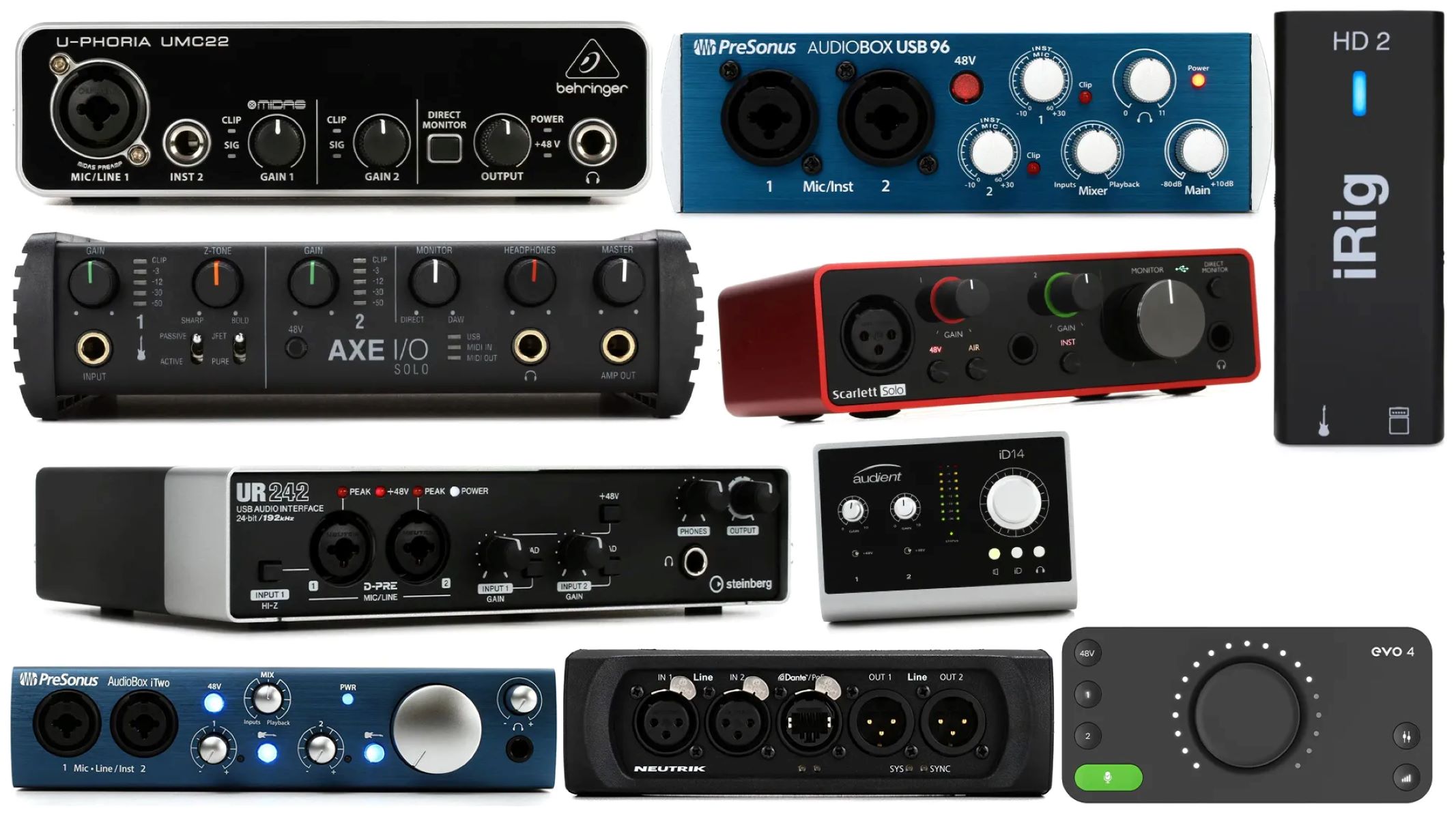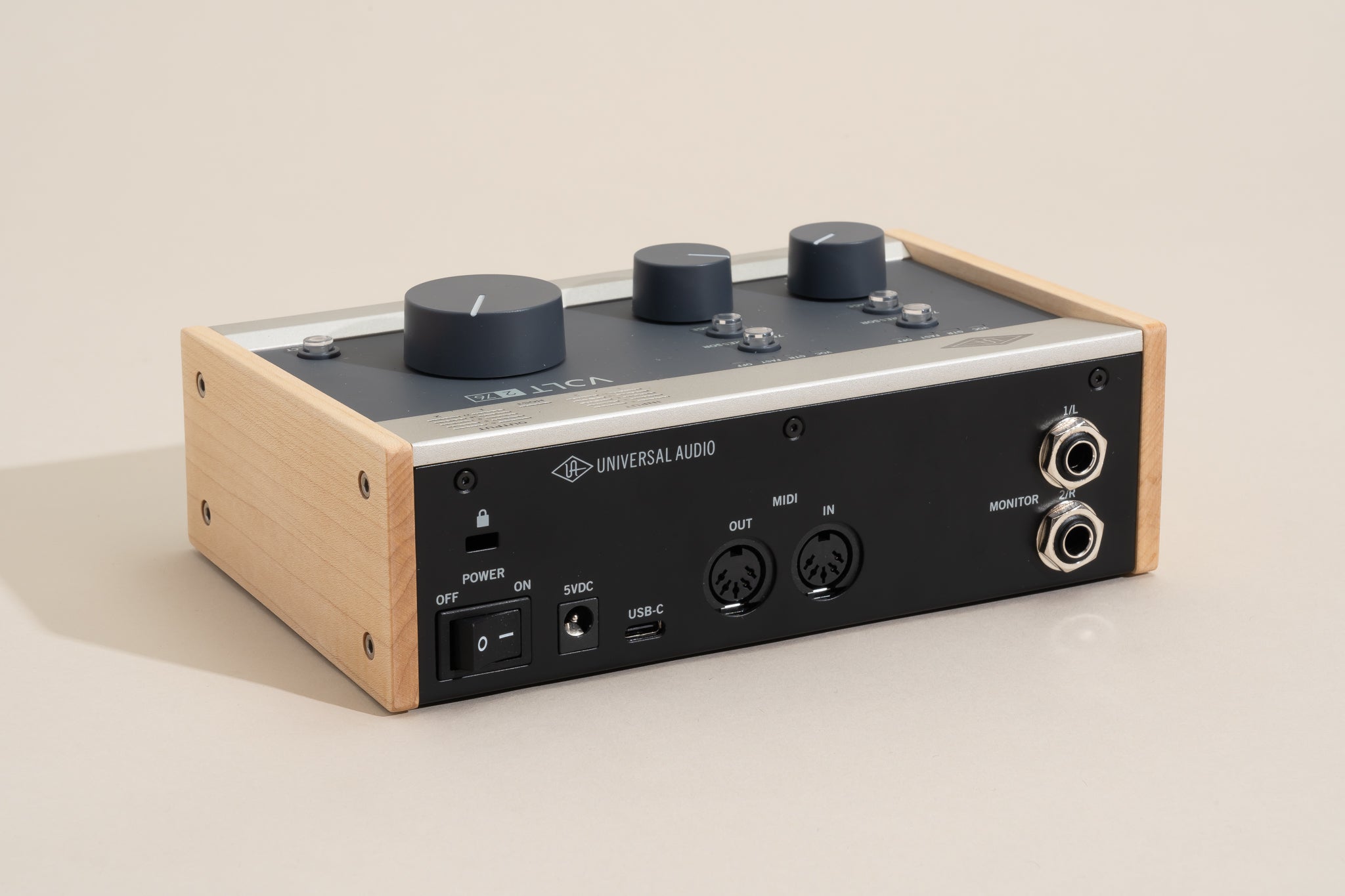Home>Production & Technology>Audio Interface>Why Buy A Thunderbolt Audio Interface
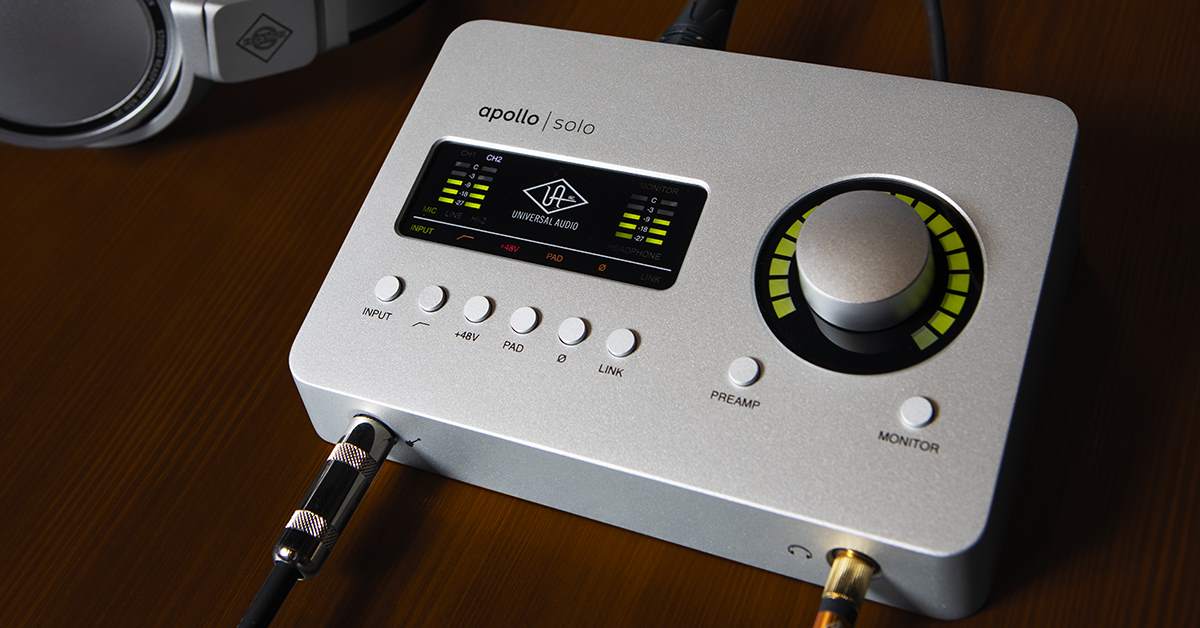

Audio Interface
Why Buy A Thunderbolt Audio Interface
Modified: March 11, 2024
Looking to improve your audio setup? Discover the benefits of a Thunderbolt audio interface and enhance your sound quality with this essential audio equipment.
(Many of the links in this article redirect to a specific reviewed product. Your purchase of these products through affiliate links helps to generate commission for AudioLover.com, at no extra cost. Learn more)
Table of Contents
Introduction
In the world of audio recording and production, having a high-quality audio interface is essential. It serves as the bridge between your computer and other audio equipment, enabling you to capture and manipulate audio with precision and clarity. One type of audio interface that has gained considerable popularity in recent years is the Thunderbolt audio interface.
Thunderbolt is a high-speed interface that was developed by Intel in collaboration with Apple. It offers exceptional performance and capabilities, making it a preferred choice among audio professionals and enthusiasts alike. Whether you’re a musician, sound engineer, or podcaster, investing in a Thunderbolt audio interface can significantly elevate your audio recording and production experience.
So, why should you buy a Thunderbolt audio interface? In this article, we will explore the various benefits and advantages it offers. From superior audio quality and faster data transfer speeds to lower latency and compatibility with Macs, a Thunderbolt audio interface can revolutionize your audio workflow. Additionally, we will delve into the expandability and connectivity options available, as well as the professional features that make these interfaces a must-have for audio professionals.
Whether you’re a seasoned professional or just starting on your audio recording journey, a Thunderbolt audio interface can be a game-changer. Let’s dive into the details and discover why purchasing one is a wise investment for anyone serious about audio production.
What is a Thunderbolt Audio Interface?
A Thunderbolt audio interface is a device that connects to your computer via a Thunderbolt port to facilitate high-quality audio recording and playback. It serves as the intermediary between your computer and other audio equipment, allowing you to capture and process audio signals with exceptional clarity and accuracy.
Thunderbolt, developed by Intel in collaboration with Apple, is a high-speed interface that offers significant advantages over traditional USB and FireWire connections. It utilizes a PCI Express (PCIe) protocol to provide lightning-fast data transfer speeds and low latency, making it a preferred choice for audio professionals and musicians.
One of the key features of Thunderbolt audio interfaces is their ability to handle high-resolution audio recordings. They typically support sample rates of up to 192kHz and bit depths of up to 24 bits, ensuring that every nuance of your recordings is captured with impeccable detail.
Moreover, Thunderbolt interfaces offer multiple input and output channels, allowing you to connect microphones, instruments, and other audio devices simultaneously. This versatility is especially useful for recording bands or multi-mic setups, as it eliminates the need for additional hardware or complicated routing options.
Another notable advantage of Thunderbolt audio interfaces is their compatibility with Mac computers. Macs have been equipped with Thunderbolt ports for many years, making them the ideal choice for users who predominantly work with Apple devices. However, it’s important to note that Thunderbolt interfaces can also be used with Windows machines by using a Thunderbolt-to-PCIe expansion chassis.
In summary, a Thunderbolt audio interface is a powerful tool that allows you to achieve professional-grade audio recordings and playback. With its superior performance, compatibility with Macs, and support for high-resolution audio, it has become the go-to choice for many audio professionals and enthusiasts.
Superior Audio Quality
When it comes to audio recording and production, maintaining the highest level of sound quality is paramount. A Thunderbolt audio interface excels in this regard by offering superior audio quality that surpasses that of other interfaces.
One of the main factors contributing to the exceptional audio quality of Thunderbolt interfaces is their high-resolution capabilities. These interfaces support sample rates of up to 192kHz and bit depths of up to 24 bits, ensuring that every subtle nuance of your recordings is faithfully captured.
Additionally, Thunderbolt interfaces often feature high-quality analog-to-digital converters (ADCs) and digital-to-analog converters (DACs). These components play a vital role in converting audio signals between analog and digital formats, and their quality directly affects the clarity and accuracy of the sound reproduction.
Furthermore, Thunderbolt interfaces employ advanced circuitry and shielding techniques to minimize signal noise and interference. This results in cleaner recordings and playback, allowing you to hear your audio material with exceptional clarity and detail.
Moreover, many Thunderbolt audio interfaces come equipped with preamps that offer pristine and transparent sound reproduction. These preamps ensure that the microphones and instruments you connect to the interface are accurately captured, with minimal distortion or coloration of the sound.
Whether you’re recording vocals, acoustic instruments, or electric guitars, a Thunderbolt audio interface provides the necessary fidelity and precision to faithfully capture the subtle nuances of your performances.
In summary, a Thunderbolt audio interface delivers superior audio quality, thanks to its high-resolution capabilities, high-quality converters, advanced circuitry, and transparent preamps. With such exceptional sound reproduction, you can be confident that your recordings will meet professional standards and sound remarkable to your audience.
Faster Data Transfer
When working with audio, especially in multitrack recording or high-resolution audio projects, having fast and reliable data transfer is crucial. Thunderbolt audio interfaces excel in this aspect, offering lightning-fast data transfer speeds that significantly enhance your workflow.
Thunderbolt technology utilizes the PCI Express (PCIe) protocol, which provides incredibly high data transfer rates. Thunderbolt 3, the latest version, offers a maximum transfer rate of up to 40 Gbps, allowing for seamless streaming and recording of multiple audio channels simultaneously.
This increased bandwidth means that you can work with larger and more complex audio projects without experiencing any lag or dropouts. Whether you’re mixing a track with dozens of individual channels or utilizing resource-intensive audio plugins, Thunderbolt’s fast data transfer ensures that your system can handle the demanding workload with ease.
Moreover, the high-speed data transfer of Thunderbolt interfaces enables fast file transfers between your computer and external storage devices. This is especially beneficial when working with large audio files or backing up your projects, as it significantly reduces the waiting time and maximizes your productivity.
Additionally, Thunderbolt interfaces support daisy-chaining, allowing you to connect multiple devices in a chain using a single Thunderbolt port. This means that you can connect your audio interface, external hard drives, monitors, and other peripherals together, minimizing cable clutter and maximizing efficiency.
In summary, Thunderbolt audio interfaces offer faster data transfer speeds, thanks to the high-bandwidth capabilities of Thunderbolt technology. This allows for smooth handling of complex audio projects, fast file transfers, and convenient daisy-chaining of multiple devices. With Thunderbolt’s speed and efficiency, you can focus more on your creative process and less on technical limitations.
Lower Latency
Latency, or the delay between inputting audio into your computer and hearing it back through your speakers or headphones, is a critical consideration for audio professionals. Thunderbolt audio interfaces offer significantly lower latency compared to other connection options, resulting in a more responsive and immersive recording and production experience.
The low latency of Thunderbolt interfaces is primarily attributed to the high-speed data transfer rates and the efficiency of the Thunderbolt technology. The fast transfer of audio data from the interface to your computer and vice versa reduces the processing time and minimizes the delay between input and output.
Lower latency is especially crucial when recording multiple tracks simultaneously or when playing virtual instruments in real-time. It ensures that your performances and recordings are accurately captured without noticeable delays, creating a natural and seamless workflow.
Low latency also enhances the monitoring experience during recording. With Thunderbolt interfaces, you can monitor your input signals directly through your headphones or speakers without any noticeable delay. This real-time monitoring capability allows you to hear yourself or other musicians clearly while performing, enabling better communication and musical interaction.
In addition, low latency is essential for using audio plugins and digital signal processing (DSP) in real-time. Whether you’re applying EQ, compression, or other effects, Thunderbolt interfaces provide the responsiveness needed for instant feedback and adjustments, allowing for precise control over your audio processing.
Overall, the lower latency offered by Thunderbolt audio interfaces translates to a more immediate and immersive recording and production experience. With minimal delay between input and output, you can focus on your creativity and make real-time decisions with confidence.
Compatibility with Macs
If you’re a Mac user, you’ll be delighted to know that Thunderbolt technology was originally developed by Intel in collaboration with Apple. As a result, Thunderbolt audio interfaces are known for their seamless compatibility with Mac computers, making them the ideal choice for Apple users in the audio industry.
Mac computers have been equipped with Thunderbolt ports for many years, ensuring that you can easily connect and utilize Thunderbolt audio interfaces without the need for any additional adapters or compatibility concerns.
The integration between Thunderbolt and macOS is seamless, allowing for efficient and stable performance. Mac users can take full advantage of Thunderbolt’s high-speed data transfer rates and low latency, enhancing their audio recording and production workflow.
Moreover, many audio software and DAW (Digital Audio Workstation) developers prioritize optimizing their products for Macs due to the widespread use of Apple devices in the creative industry. This means that Thunderbolt audio interfaces work seamlessly with popular Mac-based audio software, providing a cohesive and reliable environment for your creative endeavors.
It’s worth noting that Thunderbolt interfaces are also compatible with Windows machines, but you may need a Thunderbolt-to-PCIe expansion chassis to use them. With this expansion, Windows users can also benefit from the high-performance capabilities of Thunderbolt audio interfaces.
In summary, Thunderbolt audio interfaces boast excellent compatibility with Mac computers, ensuring a hassle-free and optimized experience for Apple users. Whether you’re a musician, sound engineer, or content creator, investing in a Thunderbolt audio interface guarantees a seamless integration with your Mac system and unlocks the full potential of your audio production capabilities.
Expandability and Connectivity
One of the standout features of Thunderbolt audio interfaces is their expandability and connectivity options. These interfaces offer a wide range of additional inputs, outputs, and connection possibilities, allowing you to connect various audio devices and expand your setup as needed.
Many Thunderbolt interfaces feature multiple input and output channels, allowing you to connect microphones, instruments, and other audio devices simultaneously. This is especially beneficial for recording bands or multi-mic setups, as it eliminates the need for additional hardware or complicated routing options.
Furthermore, Thunderbolt interfaces often come equipped with additional digital inputs and outputs, such as ADAT or S/PDIF connections. These digital ports enable you to connect external converters, interfaces, or other digital audio devices seamlessly, expanding the capabilities of your setup.
Additionally, Thunderbolt interfaces support daisy-chaining, a feature that enables you to connect multiple devices in a chain using a single Thunderbolt port. This means you can connect your audio interface, external hard drives, monitors, and other peripherals all together, minimizing cable clutter and maximizing efficiency.
Moreover, Thunderbolt interfaces often include dedicated headphone outputs with individual volume controls. This allows for direct monitoring without the need for an external headphone amplifier, providing convenience and flexibility during recording or mixing sessions.
Furthermore, Thunderbolt interfaces sometimes feature MIDI connections, allowing you to connect MIDI controllers, synthesizers, or other MIDI devices directly to the interface. This integration simplifies your workflow and eliminates the need for separate MIDI interfaces.
Overall, the expandability and connectivity options of Thunderbolt audio interfaces provide flexibility and versatility in configuring your audio setup. Whether you need to accommodate multiple devices, connect external converters, or integrate MIDI equipment, Thunderbolt interfaces offer a comprehensive solution to meet your specific requirements.
Professional Features
Thunderbolt audio interfaces are designed with the needs of professional audio producers and engineers in mind. They are packed with a range of advanced features that elevate your audio production to a higher level of professionalism and precision.
One of the key professional features of Thunderbolt interfaces is their high-quality microphone preamps. These preamps ensure clean, transparent, and low-noise amplification of your microphone signals, capturing every detail of your recordings with exceptional accuracy.
In addition to high-quality preamps, Thunderbolt interfaces often offer direct instrument inputs. These specialized inputs allow you to plug your electric guitar, bass, or other instruments directly into the interface, bypassing the need for external DI boxes. This feature ensures pristine and hassle-free direct recordings, particularly useful for guitarists and bassists seeking a clean signal chain.
Many Thunderbolt interfaces also include hardware DSP (Digital Signal Processing) for onboard processing. This feature enables you to run audio effects and plugins directly on the interface, relieving the strain on your computer’s CPU. By offloading the processing tasks to the interface, you can achieve lower latency and can work with resource-intensive effects without compromising system performance.
In addition to onboard DSP, Thunderbolt interfaces often come bundled with powerful audio software packages. These software packages typically include a comprehensive digital audio workstation (DAW) along with additional plugins, virtual instruments, and other tools to enhance your music production and mixing capabilities.
Furthermore, many Thunderbolt audio interfaces feature advanced monitoring controls. These controls allow you to adjust the volume levels, create custom monitor mixes, and switch between different cue sources, providing precise and flexible monitoring options for both recording and mixing scenarios.
Lastly, Thunderbolt interfaces often support surround sound capabilities, allowing you to work with multi-channel audio formats, such as 5.1 or 7.1 surround. This feature is invaluable for film and video game sound designers, as well as music producers creating immersive audio experiences.
In summary, Thunderbolt audio interfaces offer a wide array of professional features, including high-quality preamps, instrument inputs, onboard DSP, bundled software, advanced monitoring controls, and support for surround sound. These features enable you to achieve top-notch audio production, meeting the demands of professional audio engineers, producers, and musicians.
Conclusion
Investing in a Thunderbolt audio interface is a wise decision for anyone looking to elevate their audio recording and production capabilities. With their superior audio quality, faster data transfer speeds, lower latency, compatibility with Macs, expandability, and professional features, Thunderbolt interfaces offer a comprehensive solution for audio professionals and enthusiasts alike.
The exceptional audio quality provided by Thunderbolt interfaces ensures that every detail of your recordings is captured with impeccable precision. The high-resolution capabilities, advanced converters, and low signal noise contribute to a transparent and accurate sound reproduction.
The fast data transfer rates of Thunderbolt interfaces facilitate seamless handling of complex audio projects, enabling high track counts, resource-intensive plugins, and fast file transfers. The low latency ensures a real-time and immersive recording and monitoring experience, vital for capturing performances with precision and making instantaneous adjustments.
For Mac users, Thunderbolt interfaces offer unparalleled compatibility, seamlessly integrating with macOS and popular audio software. The expandability and connectivity options allow for easy connection of various audio devices and peripherals, reducing cable clutter and maximizing efficiency.
Additionally, Thunderbolt interfaces come equipped with professional features, such as high-quality preamps, direct instrument inputs, onboard DSP, bundled software, advanced monitoring controls, and surround sound capabilities. These features enhance your workflow, provide flexibility, and elevate your audio production to a higher level of professionalism.
In conclusion, purchasing a Thunderbolt audio interface is a smart investment for anyone serious about audio recording and production. Whether you’re a professional audio engineer, musician, or content creator, a Thunderbolt interface empowers you with the tools and capabilities to achieve outstanding sound quality, maximize efficiency, and unlock your creative potential.

